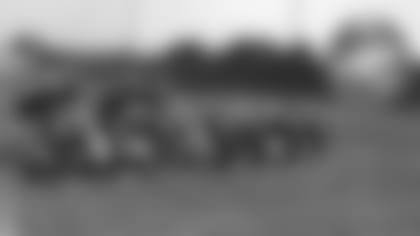Those of you not from Green Bay or too young to remember might be interested in knowing that the high school rivalry between East and West that fueled the city's interest in football was no ordinary rivalry. It was brewed by hate more than love of the game, or so it seemed.
In fact, as things turned out, the most contentious battle over the construction of what is now Lambeau Field wasn't over the cost or use of taxpayer money, but rather over its location.
Which side of the Fox River was it going to be built on? East or West? But more on that political faceoff later.
The seed for the rivalry was planted in the 19th century. What is now Green Bay was once two cities: Green Bay on the east side of the Fox and Fort Howard on the west. It wasn't until 1895, after two previous referendums had failed and years of what local historian Jack Rudolph once described as a "bitter and often openly hostile" relationship, did the people of the two cities agree to consolidate.
East and West high schools were both fielding football teams within a few years of the vote, but the ill will persisted and they couldn't even reach an agreement to play each other until 1905.
Once they did, East vs. West quickly became the biggest game in town.
Their third encounter, played in 1908, was marred by fights between fans on the field while the game was in progress. By 1916, Curly Lambeau's senior season at East, the game drew 5,000 fans, the biggest football crowd in Green Bay's history. The next year, the Green Bay militia patrolled the sidelines during the game with fixed bayonets.
In 1925, the first year of old City Stadium, the Packers-Chicago Bears game drew 5,389 fans; and East-West, 7,000. The 1927 East-West game drew a crowd of 10,000, almost double the 5,500 who attended the Packers-Bears game in Green Bay.
By the 1940s, the rivalry stoked such bitter feelings there would be freewheeling brawls on the bridges crossing the Fox River before and after games.
On the eve of the 1942 game, students blocked streets, started fights, and looted and destroyed property. It took nearly three hours and gallons of water blasted from a fire truck to disperse the crowd. The 1954 game ignited yet another free-for-all where students rocked cars, stoned windows and set fires in the downtown area.
The off-the-field turf battles were also becoming an annual event. But not all civic leaders were overly concerned. One called them more of a police problem and argued against overreacting.
No, they were nothing more than East vs. West – a rift deeper and wider than the Fox River, but part of everyday life in Green Bay.
"The East and West personally hated one another," the late Ken Kaye, who watched the Packers from their inception and lived in the eye of the East-West storm for most of his life, said almost a decade ago when he was in his 90s. "Businessmen would almost have duels. It drifted right down to the basis of every home. It was really vicious."
The 1952 East-West game drew a crowd of 14,047, a bigger gate than two of the Packers games played in Milwaukee that year.
It was with that backdrop that the push to build a new stadium in Green Bay took hold in the early 1950s. It was finally dawning on people that if Green Bay didn't replace nearly all-wooden and rotting old City Stadium, it might lose its team.
But where to build it?
In 1954, the Packers sided with those who favored rebuilding and expanding City Stadium, located behind East High School on Green Bay's near east side. Preliminary plans for a new steel stadium on that site were approved by Green Bay's Board of Education a year later.
But Leonard Jahn, a West Side alderman, protested that the choice made little sense and led the fight against it. He favored building the stadium at Perkins Park, off Military Avenue on Green Bay's far northwest side, where there would be better highway access, ample parking and room to expand.
In late 1955, Otto Rachals, then mayor of Green Bay, appointed a 16-member committee – eight East Siders, eight West Siders – to study the matter. In February 1956, the City Council, by a 22-0 vote, approved putting a bond referendum to build a new stadium on the ballot for the April 3 election.
But the East-West dispute had yet to be decided. The City Council feared its vote would be strictly along East-West lines and, in turn, the referendum would degenerate into a like battle if it tried to settle on a site beforehand.
"If we take a vote on the location now, it could end in a tie and the stadium and the Packers would be lost," said Alderman Wilner Burke, who also happened to be head of the Packers' Lumberjack Band.
With no mention of a site in the wording of the $960,000 referendum, it passed easily. The "Yes" vote won with more than 62% and carried every ward.
But two weeks later, the City Council voted against spending money for a survey to pick a location. In response, the Packers' executive committee, perhaps sensing the East-West battle could drag on forever, announced it would pay an outside engineering firm to conduct the study.
Three months later, after looking at 15 sites in all, Osborn Engineering Co. of Cleveland issued its report favoring one at Highland Avenue (now Lombardi Avenue) and Ridge Road, an area of farmland on Green Bay's far southwest side.
Six days later, the City Council approved the recommendation by a 17-7 vote. Seven East Side aldermen refused to give up the fight. But what was essentially a five-year battle over site selection was finally over. Building the stadium was easy, or at least no more difficult than getting the referendum passed.
What was then called new City Stadium was completed in less than nine months and dedicated Sept. 29, 1957.















